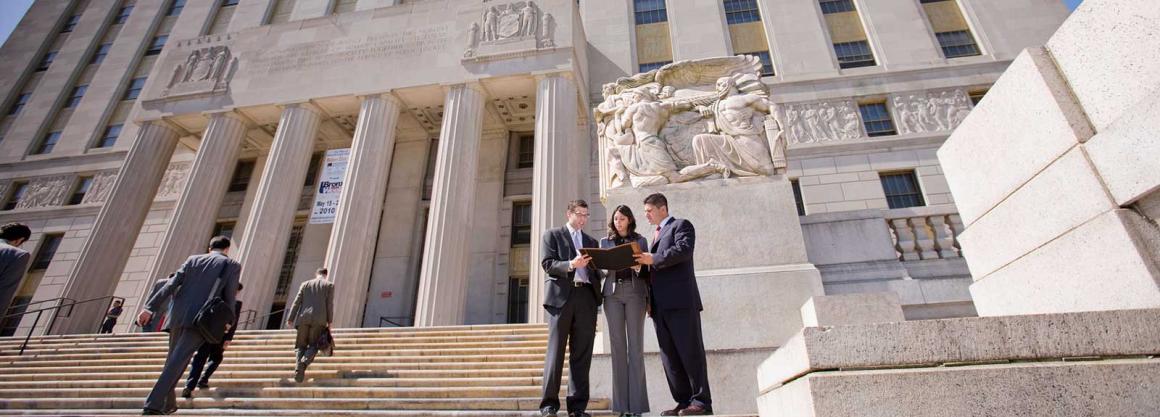Access to Justice Lab

Pace A2J includes a number of notable curricular innovations. The interdisciplinary Access to Justice Lab had its inaugural semester in the fall of 2021 as a two-credit course. It is co-taught by Prof. Diamond and Andreea Cotoranu, Clinical Professor and Director of the NYC Design Factory in Pace University’s Seidenberg School of Computer Science and Information Systems.
In the Lab, students were taught to apply a human-centered approach to collaboratively design the prototype for an innovative technology product or app to address a real-world legal A2J problem. Using legal technology to address A2J is a rapidly growing field and involves developing wide-ranging tools, including those to better educate the public about legal rights, court processes, or available legal services, self-help tools and tools that do basic legal tasks, and tools to track and manage data.
The Lab course is especially timely because legal employers want law graduates to be comfortable using technology tools, and in some cases to help innovate to use tech to improve A2J or practice, and law schools around the country are building A2J awareness and tech training into their curriculum.
The A2J Lab brought together students from across Pace University to apply human-centered design-thinking and legal training to create an innovative technology tool to address a real-world gap in access to justice. The course challenge presented in fall 2021 was to help low-income Westchester County tenants facing serious rental apartment habitability issues, and guided students through the research and development of a technology application prototype to empower tenants.
During the design process discovery phase, students researched applicable legal information, statistics, and stories, to help them understand this real-world access to justice issue. According to the Westchester County Housing Needs Assessment, more than 70% of the housing stock is nearly 50 years old, which strongly suggests a high number of homes are in need of major rehabilitation, and more than 11,000 affordable housing units are needed.
Students interviewed community and legal housing advocates and stakeholders to understand the relevant legal processes; these interviews also highlighted how effective access to justice technology could be. After synthesizing information from the research phase, students spent several weeks developing a prototype for a website application meant to help address the power imbalance between tenants and landlords in Westchester. The tool, which would be accessible in English and Spanish, was designed to allow mobile users to learn their rights and to record and track habitability issues in one easy-to-navigate place. It includes a resources section, a record-keeping feature with document generation and a checklist, data analytics to collect anonymous information that can be used for advocacy efforts, and a forum with private messaging. The inaugural Lab culminated in a team presentation and prototype demonstration to select stakeholders and faculty. Students came away from the experience with a deeper understanding about the barriers facing lower income tenants and how to help them navigate local legal and related processes.
The 9th Annual Stanley M. Grossman Innovators Invitational is an annual event held by The Center for Urban Business Entrepreneurship (CUBE) at Brooklyn Law School. Competitors are invited to develop and pitch their legal technology startups to a prestigious panel of judges, including industry professionals, entrepreneurs, and investors, to compete for prize money to help launch their ventures. This spring, the Haub Law team of three students from the Lab, worked with Prof. Diamond to create a business plan and refined A2J project presentation for the competition and placed first, winning the Invitational’s Manne Prize and $9,000 to help launch the project from an idea into reality. The students also presented their A2J tool, and supplementary materials, at the Iron Tech Invitational 2022 at Georgetown Law’s Institute for Technology Law & Policy.
In the Fall 2022 A2J Lab, the challenge presented to a new cohort of Haub Law students and Seidenberg students was to design a technology application intended to promote and increase voting access, engagement, and information for one or multiple New York State marginalized and/or underrepresented community members (e.g., youth, unhoused, returning citizens, etc.). The students settled on developing a tool that would increase voting access, information, and engagement among younger voters in local elections.
